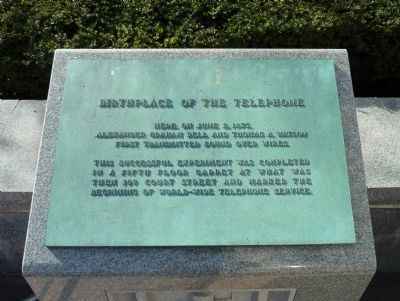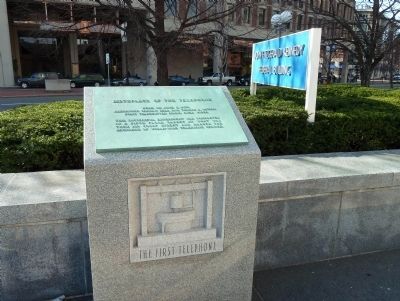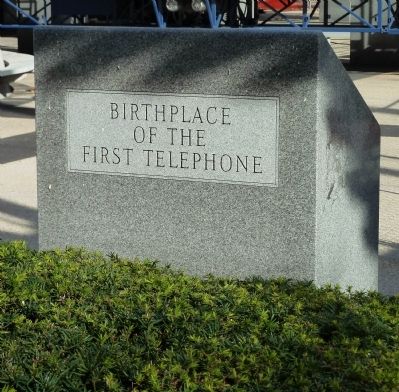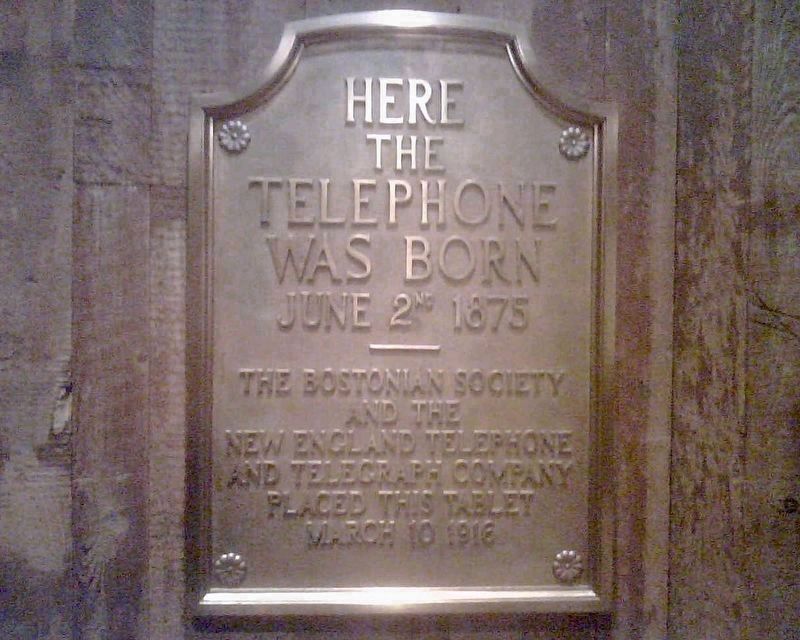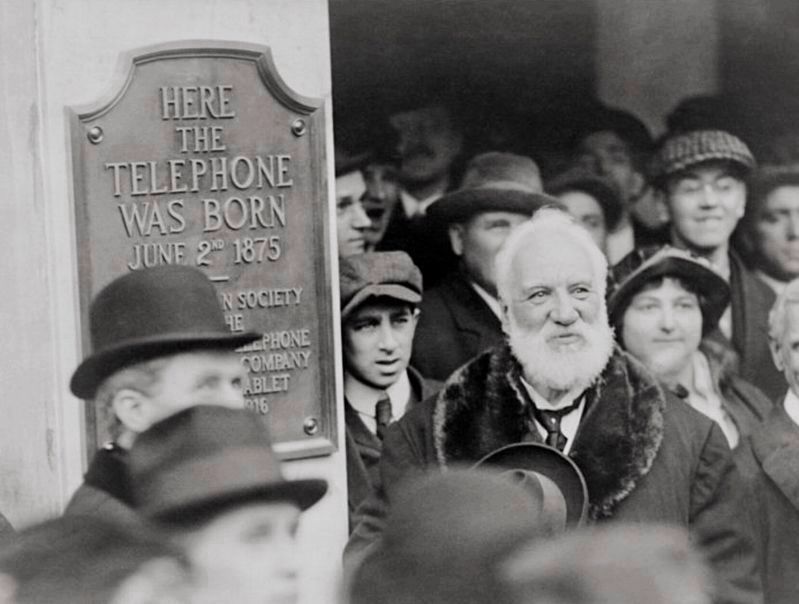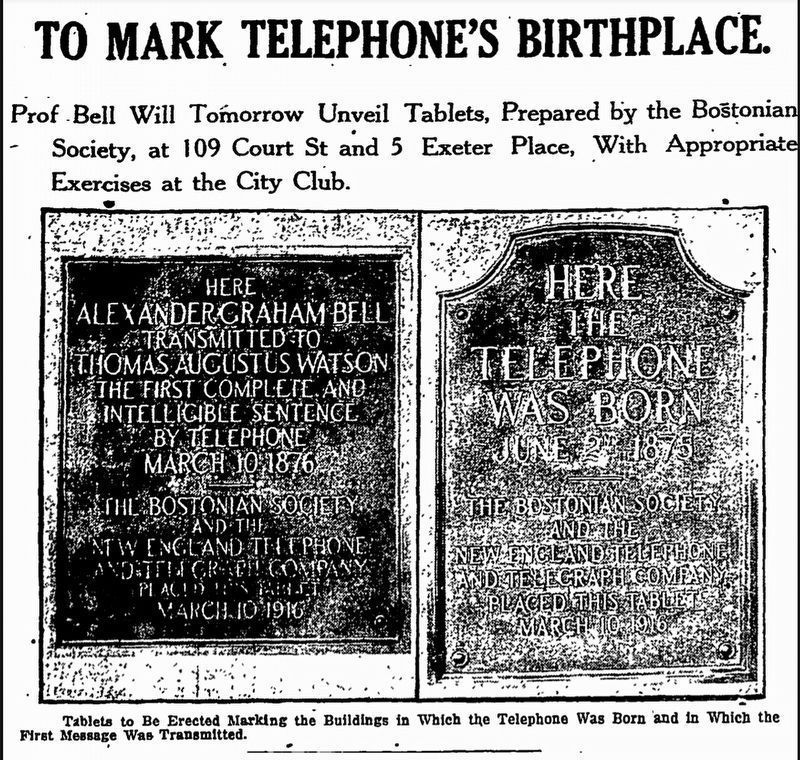Government Center in Boston in Suffolk County, Massachusetts — The American Northeast (New England)
Birthplace of the Telephone
Here, on June 2, 1875, Alexander Graham Bell and Thomas A. Watson first transmitted sound over wires.
This successful experiment was completed in a fifth floor garret at what was then 109 Court Street and marked the beginning of world-wide telephone service.
Topics. This historical marker is listed in these topic lists: Communications • Notable Events • Science & Medicine. A significant historical month for this entry is June 1922.
Location. 42° 21.637′ N, 71° 3.616′ W. Marker is in Boston, Massachusetts, in Suffolk County. It is in Government Center. Marker is at the intersection of Cambridge Street and Tremont Street, on the right when traveling west on Cambridge Street. Marker is between the John Fitzgerald Kennedy Federal Building and Boston City Hall. Touch for map. Marker is in this post office area: Boston MA 02108, United States of America. Touch for directions.
Other nearby markers. At least 8 other markers are within walking distance of this marker. The Norman B. Leventhal Walk to the Sea / Scollay Square & Government Center (about 500 feet away, measured in a direct line); Ingersoll's Inn Site (about 600 feet away); D.L. Moody (about 700 feet away); Robert Keayne / Col. Nicholas Paige (about 800 feet away); The First Governor (approx. 0.2 miles away); Welcome to King’s Chapel Burying Ground (approx. 0.2 miles away); Pilgrims and Patriots (approx. 0.2 miles away); King’s Chapel Burial Ground (approx. 0.2 miles away). Touch for a list and map of all markers in Boston.
Regarding Birthplace of the Telephone. The experiment referred to on this marker occurred when Alexander Graham Bell and Thomas Watson were trying to perfect a “harmonic telegraph” — one that could use different sound-wave frequencies to transmit several telegraph signals (more than one message) simultaneously over the same wire. In his 2010 book, A City So Grand: The Rise of an American
Metropolis, Boston 1850–1900, Stephen Puleo describes how the men were in different rooms when Watson, trying to get a stuck reed to vibrate, gave it a pluck. Bell, in the receiving room, distinctly heard the “twang” of the reed and instantly realized that if this complex sound could be transmitted over a wire, so might a human voice.
Within a few months Bell rented new space on Exeter Street in Boston, several blocks south of here, so they could continue their experiments. It was in the Exeter Street lab that on March 10, 1876, Bell transmitted his famous words, “Mr. Watson, come here. . . . I want to see you.”
Also see . . . Alexander Graham Bell - Wikipedia entry. (Submitted on November 23, 2011, by Roger W. Sinnott of Chelmsford, Massachusetts.)
Credits. This page was last revised on March 1, 2023. It was originally submitted on November 23, 2011, by Roger W. Sinnott of Chelmsford, Massachusetts. This page has been viewed 1,435 times since then and 207 times this year. Photos: 1, 2, 3. submitted on November 23, 2011, by Roger W. Sinnott of Chelmsford, Massachusetts. 4, 5, 6. submitted on March 1, 2023, by Craig Baker of Sylmar, California. • Bill Pfingsten was the editor who published this page.
